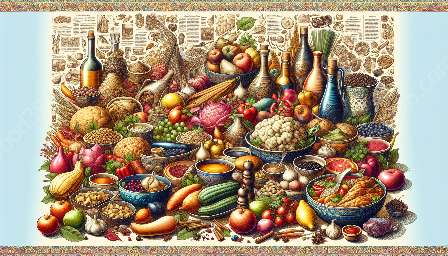Bread and grains have held a significant role in ancient food traditions, deeply intertwined with rituals and the evolution of food culture.
Ancient Food Traditions and Rituals
Ancient food traditions were rooted in the availability of natural resources and the cultural practices of different civilizations. In many ancient societies, bread and grains were considered sacred and a staple in religious rituals and daily life. The preparation and consumption of bread were often central to communal ceremonies, symbolizing prosperity and sustenance.
Importance of Bread and Grains
Bread and grains played a crucial role in nourishing ancient populations, providing sustenance and energy for labor and daily activities. The cultivation of grains such as wheat, barley, and millet marked the development of early agriculture, leading to the establishment of settled communities and the rise of ancient civilizations.
The significance of bread and grains extended beyond mere sustenance; they were intrinsic to social gatherings, trade, and religious observances, reflecting a deep connection between food and cultural identity. Rituals associated with sowing, harvesting, and baking grains were deeply embedded in the fabric of ancient societies, shaping their traditions and practices.
Origin and Evolution of Food Culture
The ancient use of bread and grains laid the foundation for the evolution of food culture, influencing culinary practices and shaping the diets of subsequent generations. As civilizations expanded and interacted through trade and conquest, the exchange of culinary knowledge and ingredients led to the fusion of diverse food traditions, enriching the global food landscape.
Culinary Innovations
The cultivation and processing of grains spurred culinary innovations, giving rise to diverse bread-making techniques, such as fermentation and leavening. These advancements not only improved the taste and texture of bread but also contributed to the development of distinct regional variations and traditional bread recipes.
Furthermore, the incorporation of grains into various dishes, including porridges, soups, and pastries, reflected the creative adaptation of staple ingredients, demonstrating the resourcefulness and culinary ingenuity of ancient communities.
Cultural Significance
Bread and grains held profound cultural significance, symbolizing fertility, abundance, and the interconnectedness of human societies. They were featured prominently in folklore, art, and literature, perpetuating the reverence for these essential food staples throughout the ages.
The legacy of bread and grains in ancient food traditions persists in modern culinary practices, underscoring their enduring influence and the continuity of food culture across generations.


